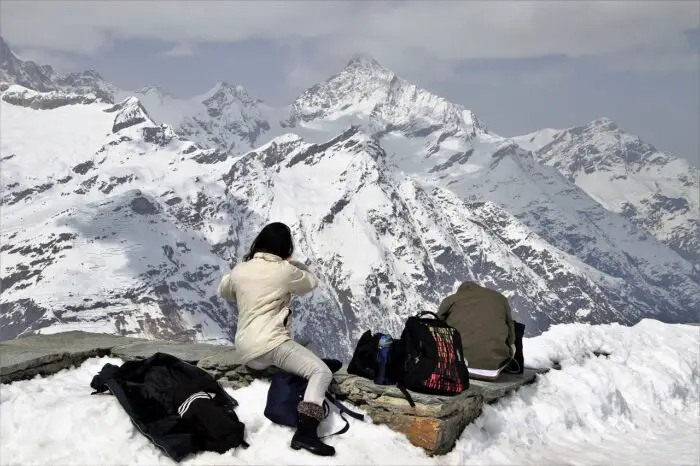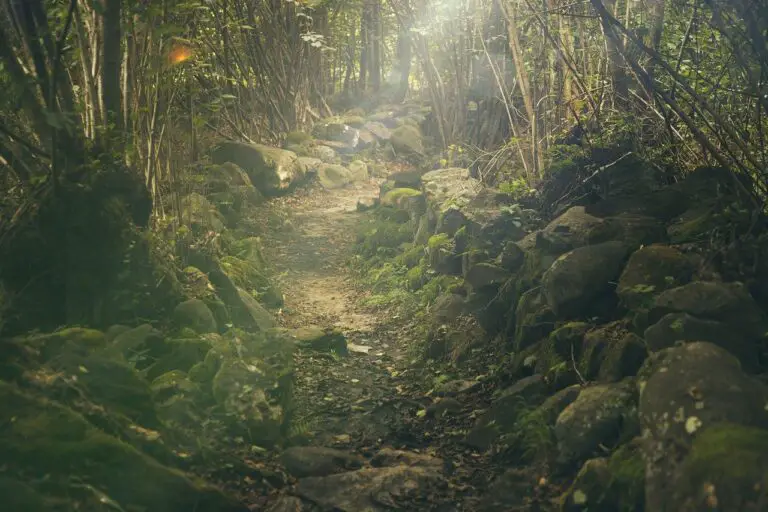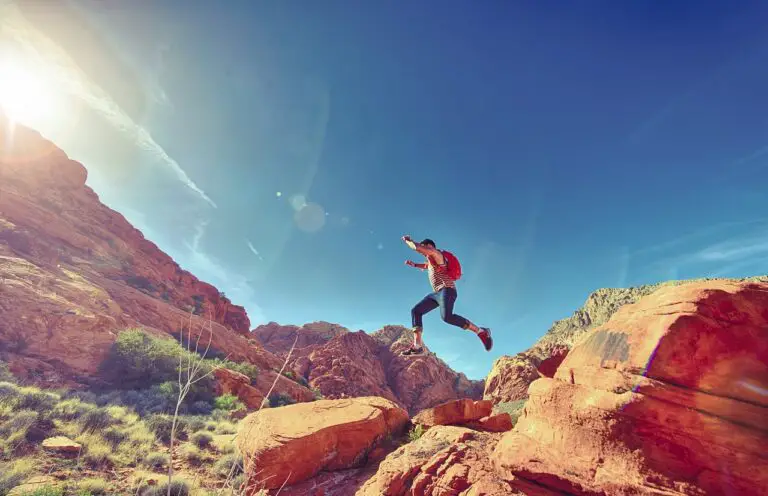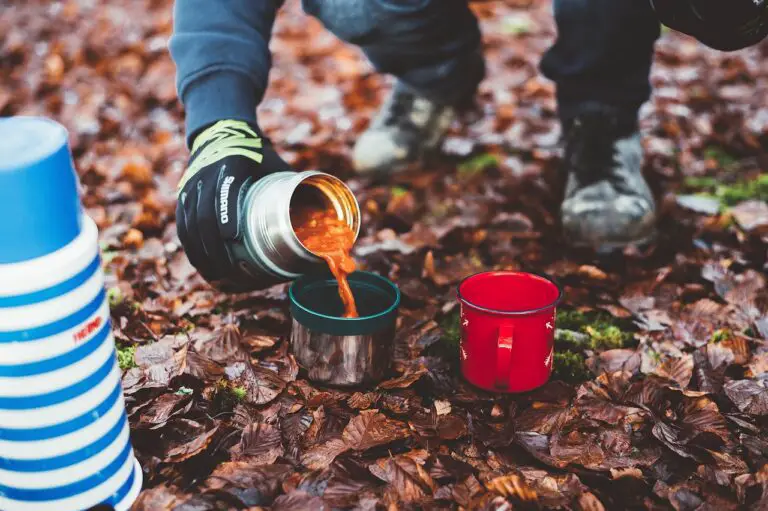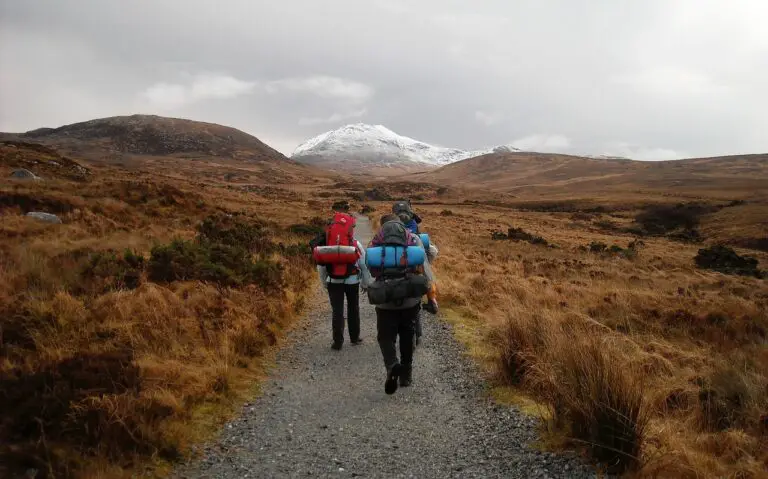Is Hiking Dangerous? A Fact-Based Answer
Some people who want to get into hiking feel a bit intimidated by the difficulty level of some trails, and hear stories about hikers who had accidents while on a trip. The newscasts sometimes make it hard to gauge how dangerous activities are. So based on the actual numbers, is hiking dangerous?
Hiking is not dangerous compared to other outdoor activities, with low injury and fatality rates. There are several risks hiking dangers, such as falling and experiencing illness, but most of them are under the hiker’s control.
In this post, we’ll break down the statistics related to the dangers of hiking, and consider the different possible risks and how to manage them.
How dangerous is hiking?
When considering whether an activity is dangerous, we should consider the facts, and compare the numbers with other activities of the same nature. It feels weird to discuss fatalities and injury numbers, but it’s the only way to make a comparison. Luckily, there are a lot of studies on the subject.
Different studies are typically focused on different periods and different physical locations, and so result in different numbers. I’ve reviewed multiple different studies, and I’ll feature ones that seem average in results.
It’s important to note that in most studies the researchers only take into account mountain hiking in their calculations. Of course, a leisurely walk on a comfortable trail is really different from hiking in the mountains. So some of the numbers here are on the high end.
For example, in the table below, which is taken from a study from 2009 in the USA, different activities mortality rates are compared:
| Activity | Mortality Rate (per 100,000 participants) |
|---|---|
| Mountaineering | 598 |
| Hand Gliding | 178 |
| Boxing | 45 |
| Mountain Hiking | 6 |
| Scuba Diving | 3 |
| American Football | 2 |
| Skiing | 1 |
In the table, it’s clear that hiking is much less dangerous than some of the activities, but also more dangerous than others. Mountain hiking is more comparable with scuba diving and American football, rather than mountaineering and hand gliding.
In a different study done in Nepal, the numbers are a bit higher and are around 14 per 100,000 participants((Shlim, D. R., & Gallie, J. (1992). The causes of death among trekkers in Nepal. International journal of sports medicine, 13(S 1), S74-S76.)). While the paper suggests higher numbers than what seen before, trekking in Nepal is still relatively safe.
Of course, this doesn’t take into account the exposure time. Obviously, some activities take longer than others, and so if you consider the mortality based on exposure time, the numbers may vary.
While most studies on the subject focused on mortality, some considered injury rates from hiking. In a study done on Washington State National Parks((Stephens, B. D., Diekema, D. S., & Klein, E. J. (2005). Recreational injuries in Washington state national parks. Wilderness & environmental medicine, 16(4), 192-197.)) around 2.2 injuries per 100,000 people were reported, while only 55% of them were related to hiking. The mortality was also much lower in this study than in others.
On famously difficult hiking trails, like the Appalachian Trail, only around 69% of hikers finish the trail, as reported in a study from 1997((Boulware, D. R., Forgey, W. W., & Martin II, W. J. (2003). Medical risks of wilderness hiking. The American journal of medicine, 114(4), 288-293.)). People typically don’t finish the hike because of some medical condition or injury. These numbers are probably on the high end because this Appalachian Trail is known for its difficulty.
The main conclusion from these statistics is that hiking is a generally safe activity, with a low mortality rate compared to other outdoor sports. Injuries are quite rare as well for standard trails, but more common on difficult trails, mainly when hikers don’t come prepared.
Main risks of hiking
Let’s consider the main risks of hiking, as reported by studies done on the subject. While there are a lot of things to look out for, most dangerous situations hikers face are similar to each other. By understanding the risks, you’ll be able to prepare for hiking and know what to look out for.
A lot of studies were done on the subject of hiking safety, and a review paper from 2017 actually gathers and processed a lot of the information((Kortenkamp, K. V., Moore, C. F., Sheridan, D. P., & Ahrens, E. S. (2017). No hiking beyond this point! Hiking risk prevention recommendations in peer-reviewed literature. Journal of outdoor recreation and tourism, 20, 67-76.)). They split the risks into different categories, but I actually want to consider the actual risk factors of hiking instead.
What’s important to note about that study is that they’ve found most of the risks in hiking are in the control of the hikers and their behavior. If you understand the different factors, you can really lower the risks when hiking.
Falls and diversions
When hiking, taking a wrong turn can result in you getting lost, or worse, falling and getting hurt. If you fall, you can wound, sprain, or even break something. The real times where deaths happen are when hikers fall down to a hard-to-access location and suffer from injuries, so it’s difficult to find and rescue them.
A major reason for falls is getting off the trail, which can happen by choice or by accident. It can also happen if you slip off of the trail, walk on some slippery area, or on loose rocks.
Taking a wrong turn can also result in getting lost. This is especially dangerous if you get very lost and can’t find the trail before nighttime when temperatures are down and animals are out. If you don’t have overnight supplies, it’s not fun to be out and lost at night.
Most of falls and diversions result from the hiker not reading or listening to warnings. This includes reading signs and instructions, or following advice for specific situations.
Health factors
There are a variety of health issues that can occur when you’re hiking, especially if you don’t practice safe actions. I’m not a doctor, but I can suggest some reasonable things you should do to stay safe and healthy when hiking.
Surprisingly, common health issues when hiking result from unhygienic behavior, which can result in diarrhea((ref:4)). Examples of these dirty behaviors are drinking unfiltered water from natural water sources, and not cleaning hands and cooking utensils when needed. These can get the hiker ill in many different ways.
Some hikers suffer from joint pain and injuries, especially when trekking on rough terrain with heavy equipment. It’s a very common injury among outdoor people, but luckily it usually only requires some rest and care for the hiker to recover. In harder cases, they can require bandaging the hurt area, and in some cases, medical assistance((Finnish Red Cross, Joint Injuries.)).
Sunburns are quite common among light-skinned hikers, especially if they forget to put sunscreen on. They’re unhealthy and uncomfortable and can cause a lot of pain.
In extreme weather, hikers that don’t dress properly can risk becoming ill. Hypothermia happens if you’re too cold, while heat exhaustion can happen when your body becomes too hot. Your clothes serve an important role in keeping you healthy, so you should dress properly, according to the weather.
If you’re wondering how to dress for hot weather, I wrote an entire experience-based post on what to wear hiking in hot weather, so make sure to give it a read.
Another typical weather-related health issue hikers can face is dehydration. This happens when hikers don’t drink enough water and are very common in hot climate areas, where hikers sweat a lot and need more water. Dehydration can be really dangerous, so make sure to bring enough water to the hike, based on the climate in your area.
When going to high altitudes, hikers who don’t prepare properly can suffer from high altitude illness. That’s why a typical alpine hike usually has stages, where the group progressively acclimates to the height.
Of course, there are various other illnesses that can occur on outdoors, so if any symptoms arise you should seek medical help. If you’re worried about a specific medical condition you might have, consult with a doctor prior to going on the trip.
Animal attacks
Animals are part of the outdoors, and we’re visiting their homes when we hike. Some animals can be dangerous though, if you get too close or if they feel threatened.
Various local animals like coyotes and wolves live in nature and can attack travelers who don’t stay safe. The specific animals you might encounter when hiking depends on the destination. They usually try to stay away from humans, especially in the daytime.
Especially in the summertime, you can also encounter snakes, many of which can be really venomous. A snake bite can be really dangerous, so it’s really important to stay away from them.
Most encounters happen when people accidentally get too close to a snake, try to move a stone they’re hiding behind, or when a snake hides in an item (like a shoe or some clothing) when the hiker isn’t aware.
Unlike small predators like coyotes and wolves, bigger animals like bears aren’t scared easily and can be aggressive if you get too close. Though attacks are quite rare, make sure to leave the area if you see signs big predators are around.
While you might not notice them sometimes, insects can be all around when you’re outdoors. While most of them are harmless, some insects are poisonous and can cause you harm, especially if you’re allergic to their sting. To keep safe, try to notice where you’re sitting and cover yourself with long clothing. You can also use repellents to keep insects away.
Improper equipment
Some of the risks with hiking are related to the equipment you have.
The weight of your backpack, for example, can significantly increase or decrease the risk of injury. Of course, what weight backpack you can carry depends on your fitness level, but a heavy backpack puts a lot of stress on your muscles and joints and makes it harder to walk.
If you want to learn more about backpack weight, I wrote an entire detailed post about how much a backpack should actually weigh.
Another important equipment-related risk of hiking relates to your clothing, and how prepared you are for the weather. As mentioned before, extreme weather can cause medical issues, and your clothing should fit the weather you’re hiking in. You need warm insulating clothing when hiking in winter, and light breathable clothing in summer.
Wearing the wrong type of shoes can really increase the risk of injury when hiking. You need light and supportive footwear with a good grip on the ground.
In some situations, you’ll need some first aid supplies, especially if you suffered from some injury. Not having the right supplies can increase the risk of the injury developing into something more serious.
Crime
While criminal activity is very rare when hiking, you should make sure to stay safe and protect yourself from a potential criminal situation. For example, a simple statistical analysis found that you’re way less likely to be attacked on the Appalachian Trail than in other places((The Trek, Examining the Real Numbers Behind Violent Instances on the Appalachian Trail)).
Still, someone might want to steal from you or attack you for some reason. Though unlikely, you should stay safe and away from people you feel might want to do you harm.
Use caution, and if you’re especially scared, you can carry some kind of personal protection item like pepper spray, so you can defend yourself.
How to stay safe while hiking
With these risk factors in mind, there’s a lot you can do to stay safe while hiking. As I mentioned, the research shows most risk factors with hiking are within the control of the hiker, so if you prepare and have the right things in mind, you can significantly reduce the risks.
Follow instructions
To stay safe, make sure to follow the instructions of signs and guides on the trail. Following signs will keep you on the trail, and help you avoid getting lost and falling.
Following instructions is also related to following common guides with preparation to the trip, bringing the right things with you, like any special tools needed to complete the trail.
Disinfect water and keep clean
As mentioned, a major cause of people not completing hiking trips is due to some digestive health condition, usually because of some unhygienic behavior.
To make sure you’re safe, bring enough water for the trail, and if you know you’ll need to drink from natural sources, bring a water filter with you. Especially if you drink from streams and lakes, filtering your water is essential to keeping yourself safe.
Additionally, keep your cooking utensils clean after eating. Use soap and water to properly clean your tools, because they might make you ill if you don’t properly clean them.
Keep your hands clean, especially after bowel movements, to avoid getting yourself and your group sick. Wash them thoroughly with water and soap, or use some alcohol-based cleaning gel.
The trail can make you feel dirty and forget about hygiene but keeping relatively clean where possible can make a significant difference in how likely you are to get ill.
Inform someone of your whereabouts
Don’t go on a hike without someone knowing where you are. If you happen to get lost, it’s important that someone will know roughly where you are, so someone can come to rescue you. That’s especially important if you hike on your own since you
Cellular reception is usually really bad on hiking trails, so don’t count on it for emergencies. Make sure a friend or a relative knows you’re on a hike, so if you don’t contact them they’ll know something is wrong.
Keep contact with people when you can, so they have more accurate information about your location. When you get some reception make sure to inform them you’re fine, so they won’t worry.
Keep food contained and stay away from animals
As we discussed, you should stay away from wild animals you might meet on the hiking trail. Though they’ll naturally try to stay away from you, if caught off guard they meet feel threatened and attack you.
Keep your food contained and stored away, so wild animals won’t be able to smell it. You can use plastic containers and bags, and store the food inside your backpack.
You should also keep your trash in a tied plastic bag because it might smell too. Put it in a hard-to-access location, especially overnight, where animals are active and might try to eat your trash.
Bring the right equipment
When you go on the hike, you’ll need to bring the right equipment with you. This includes clothing, your backpack, overnight gear, and whatever else you need to complete the trail.
Your clothing should be appropriate to the climate where you’re hiking, and to the specific weather conditions on the days of the hike. Bring warm clothes, a jacket, and a hat for winter hiking, and light breathable clothes for hot weather.
Some hikes require special equipment too. For example, if you’re hiking on ice you might need crampons or snow shoes for hiking in the snow. Some hikes require a rope, or some other tools, so check you have everything before going on the trail.
But remember to avoid overpacking, because you’ll be carrying everything you pack. A heavy backpack can increase the likelihood of injury, so make sure it fits your fitness level, and that you can comfortably hike with your backpack.
Conclusions
While hiking is a relatively safe outdoor activity, compared with the alternatives, it does come with some risks. Still, there’s a lot you can do to manage those risks, and still enjoy a fun hike in nature.
Ultimately you should trust your instincts and apply reason to whatever decision you have to make, and if you prepare correctly, you’ll be safe.

